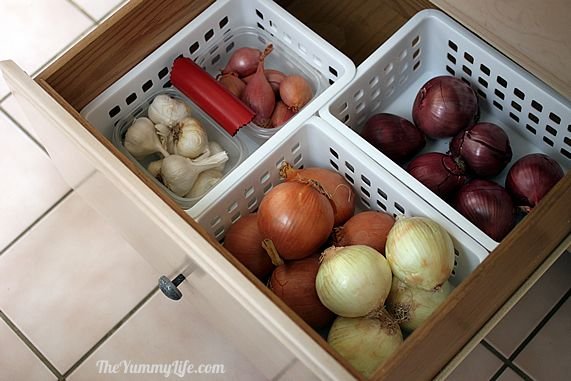To store shallots properly, you’ll need to make sure they are in the right environment. **The ideal storage method?** Keep your shallots in a cool, dry place with good air circulation. Avoid storing them in the fridge, as excess moisture can cause them to spoil quickly. How you store your shallots can make all the difference in keeping them fresh for longer. Understanding the best practices for storing shallots can help you maximize their shelf life and enjoy their flavor in your cooking.
How to Store Shallots: A Complete Guide
Welcome, dear readers! If you’re a fan of cooking or just someone who loves to experiment with flavors in the kitchen, you probably appreciate the unique taste that shallots can add to your dishes. These small, flavorful bulbs are a staple in many cuisines around the world. However, one common dilemma that many home cooks face is how to store shallots properly to ensure they stay fresh and flavorful for as long as possible.
The Basics of Shallots
Before we dive into the nitty-gritty of storing shallots, let’s first understand what shallots are and why they are worth all the attention. Shallots are members of the allium family, along with onions and garlic. They have a milder flavor than onions, with a hint of garlic-like sweetness, making them perfect for adding depth to various dishes.
Choosing the Right Shallots
When it comes to storing shallots, the first step is to select the best ones. Look for shallots that are firm, with dry, papery skin. Avoid shallots that are sprouting, moldy, or have soft spots, as these are signs of spoilage.
Storing Shallots at Room Temperature
If you plan to use your shallots within a week or two, storing them at room temperature is perfectly fine. Find a cool, dry place in your kitchen away from direct sunlight to keep your shallots fresh. A well-ventilated area is ideal to prevent them from becoming moldy or sprouting prematurely.
Extended Storage Options for Shallots
For those who like to stock up on shallots or have a surplus from a bountiful harvest, there are ways to extend their shelf life and enjoy their flavors over a more extended period.
Storing Shallots in the Pantry
If you have a pantry with good airflow and consistent cool temperatures, consider storing your shallots there. Make sure to keep them away from potatoes, as the gases released by potatoes can cause shallots to spoil faster.
Using Mesh Bags for Storage
Another excellent way to store shallots for an extended period is by using mesh bags. These breathable bags allow air circulation, preventing moisture buildup that can lead to rotting. Hang the mesh bags in a cool, dark place to maximize the shelf life of your shallots.
Preserving Shallots for the Long Haul
For those looking to preserve shallots for even longer periods, there are methods that can help you enjoy the unique flavor of shallots year-round.
Freezing Shallots
Freezing shallots is a fantastic way to preserve them for an extended period. Start by peeling and finely chopping the shallots. Place them in an airtight container or freezer bag, removing as much air as possible before sealing. Frozen shallots are perfect for adding flavor to soups, stews, and sauces.
Pickling Shallots
If you enjoy the tangy flavor of pickled vegetables, consider pickling your shallots. This method not only preserves the shallots but also adds a unique twist to your dishes. Prepare a simple pickling solution with vinegar, sugar, and spices, and submerge your sliced shallots in the mixture. Refrigerate the pickled shallots for at least a day before enjoying them.
Reviving Shallots
Sometimes, despite our best efforts, shallots can start to shrivel or lose their freshness. But worry not – there are ways to revive them and make them usable again.
Rehydrating Shriveled Shallots
If your shallots have started to dry out and shrivel, place them in a bowl of room temperature water for about 15-30 minutes. This will help rehydrate them, making them plump and juicy once again. Remember to pat them dry before using them in your cooking.
Trimming and Using Sprouted Shallots
Should your shallots start to sprout, don’t fret. Simply trim off the sprouting green shoots and use the rest of the shallot as usual. The flavor may be slightly milder, but they are still perfectly edible and can enhance your dishes.
In Conclusion
Storing shallots doesn’t have to be a daunting task. With the right knowledge and a few simple tricks, you can ensure that your shallots stay fresh and flavorful for an extended period. Whether you choose to store them at room temperature, in the pantry, or opt for long-term preservation methods like freezing or pickling, your shallots will be ready to elevate your culinary creations whenever you need them.
Experiment with different storage methods to find what works best for your needs and enjoy the delightful addition of shallots to your favorite dishes. Happy cooking!
How to store shallots in the refrigerator | small onions for a longer period shorts###
Frequently Asked Questions
How should I store shallots properly?
To store shallots properly, ensure they are kept in a cool, dry, and well-ventilated place. Avoid storing them in plastic bags as it can cause moisture buildup and lead to spoilage. Instead, you can store shallots in a mesh bag, paper bag, or a basket that allows air circulation.
Can I store shallots in the refrigerator?
Yes, you can store shallots in the refrigerator, especially if you live in a warm and humid climate. Place the shallots in a paper bag or a perforated plastic bag in the vegetable drawer to maintain their freshness. Avoid storing them in the fridge alongside fruits that release ethylene gas as it can cause shallots to sprout.
How long can shallots be stored for?
When stored properly, shallots can last for several weeks to a few months. Check them periodically for any signs of sprouting, mold, or softening. If you notice any spoilage, remove the affected shallots to prevent them from affecting the rest of the batch.
Final Thoughts
In conclusion, store shallots in a cool, dry place with good airflow. Avoid areas with moisture or direct sunlight to prevent sprouting and decay. Use a mesh bag or a ventilated container for optimal storage. Remember, proper storage of shallots can help prolong their freshness and flavor.










